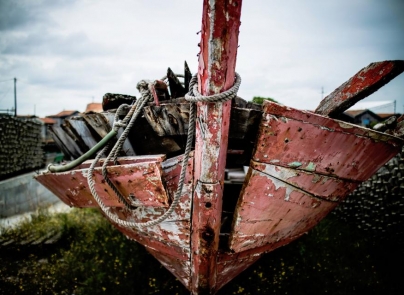Pierre Durand – Huguenot Martyr

Pierre Durand was born in a turbulent France. In 1685, only 15 years before his birth, France’s king Louis XIV (“Le Roi Soleil”), revoked the 1598 Edict of Nantes, which had been allowing Protestants freedom of worship.
Louis’s persecution against Huguenots (French Protestants) had been gradual – from their simple exclusion from government positions and limitations of their meetings to an outright demand that they convert to Roman Catholicism. This demand was enforced by special forces known as dragoons. Once the number of Protestants was significantly reduced, revoking the Edict of Nantes appeared like a politically sensible move in the interest of national unity.
Pierre’s Youth
In order to survive, Pierre’s parents, Étienne and Claudine, had to make some compromises. For example, they had allowed their children to be baptized in the Roman Catholic Church and to receive Roman Catholic instruction at school. At home, however, they raised them in the Protestant faith, using a Bible, a Psalter, and a few other books they were able to keep in a hiding place inside a wall.
They also kept by the barn a hiding place for preachers who passed through their region – the rough, charming area between the Rhone River and the Massif Central mountains, where Protestantism had survived the harshest persecution.
Pierre was born in the small village of Bouschet de Pranles. As soon as he finished his basic schooling, he began to work for a notary in the nearby town of Privas. It was there that he met one of the young pastors who desired to unite and reform the small and struggling Huguenot churches.
There was a lot to do. After the persecution, some Protestants known as Camisards had started a militant rebellion against the crown. The main fighting lasted two years (1702-1704), but uprisings continued until 1710, when most of the Camisard leaders had died.
It was then that a new generation of pastors took the lead. The Camisards had fought bravely but had done little to unify the church, especially on doctrinal grounds. In 1715, taking advantage of an interim period in the government, the group met to discuss a line of action.
Their leader was 19-year old Antoine Court, a fiery young man with clear ideas. His agenda included the establishment of regular worship, the restoration of proper church government (including consistories and regular synods), the training of pastors, and the suppression of fanaticism in all its forms, such as violence and prophecies (which had often taken the place of Scriptures).
Clandestine Preacher
Pierre began advocating this agenda in his area, organizing and promoting worship services. On January 29, 1719, he and his friend Pierre Rouvier organized morning and evening services at a house owned by Claudine, with 19-year old Pierre Durand preaching and his friend reading the Scriptures. In between services, the two roamed the area to invite more people. They didn’t know that a government spy had attended the morning service and had informed the authorities.
The evening service had barely started when the guards attacked the congregation, making arrests and shooting at those who fled. Most people managed to escape, but Claudine, being the property owner, was arrested. Her house was burned, and the Durands never saw her again. They only heard about her death seven years later.
Some guards stayed at the Durands’ for 21 days, hoping that Pierre would return. When he didn’t, they left with some of Étienne’s furniture and animals.
In the meantime, Pierre and his friend found refuge in Switzerland, where Antoine Court was also based. Pierre contacted his father six months later. The letter, addressed to both parents because he didn’t know about Claudine’s arrest, explained Pierre’s decision of becoming a minister of the Gospel. He knew that his parents would have reservations. It was a dangerous choice, and several relatives had already expressed negative opinions about him.
Still, he was convinced of his calling. “I pray to the Lord that all will be to the glory of His name, to the furthering of His reign, and to the destruction of Satan’s empire,” he wrote.
He was ordained in 1526 and moved back to France as an itinerant preacher.
A Difficult Decision
Two years later, he had to make what was probably the toughest decision of his life. His father, who had been arrested, sent him a letter begging him to leave France. “Have mercy on me once,” wrote Étienne, “considering my age and the grief I am suffering, and also take care of yourself.”
The thought of his father languishing in prison must have been heart-wrenching, especially since Pierre knew he was the cause of Étienne’s arrest. On the other hand, his countrymen were in dire need for trained preachers. Besides, he didn’t trust the government’s promises. Most likely, they were planning to catch him at the border while keeping his father in prison.
Étienne was imprisoned at Fort Brescou, a small island off the coast of France. His daughter Marie was also captured and imprisoned in the Tower of Constance, for the only crime of being connected to a Protestant preacher.
A Martyr for the Gospel
Pierre’s activities in France continued to be a cause of irritation for the government. His constant travels and the secrecy of his meetings made him uncomfortably elusive. In 1532, the government decided to produce an extremely high reward on his head. The plan worked. On February 12, as he was leaving the home of some friends, he was spotted by a woman who revealed his location to the authorities. He was soon captured in an ambush by French guards.
He could have fought back. In fact, he instinctively reached for his gun, but let go when he realized these were government authorities. One of the tenets of the newly reformed church – in contrast with the Camisards’ tactics – was respect for the civil powers.
The guards took him for questioning, then led him to a prison to wait for his execution. In line with a long Huguenot tradition, he sang a Psalm as he rode to his death. In his case, it was Psalm 25, “To You, O Lord, I lift up my soul.”
On the day of his execution, he begged the authorities to release his relatives from prison: his father, his sister, his sister’s fiancée (or husband, according to some sources), and his mother-in-law Isabelle Rouvier (mother of his best friend). Isabelle had been imprisoned for some time in spite of her absolute opposition to Pierre’s marriage to her daughter Anne.
Anne lived in Switzerland at that time, urged by Pierre who was concerned for her safety. Their children, Anne Jr. and Jacques-Étienne, stayed with some relatives because they were too young to travel (their first child Jeanne had died in similar circumstances).
Pierre last letter to his wife, written on February 15, included practical matters and reassured her of the safety and health of their children, ending with these words, “A Dieu, ma chere Enfant. I am and will be all of my life, with much ardent and sincere affection, your most humble servant and faithful husband.”
Pierre Durand in Reformed History
Pierre Durand was not simply an isolated martyr in the history of the church. He was one of the main architects in a concerted effort to bring the Huguenot churches to unity, order, and theological orthodoxy. By the time the French Revolution brought legal toleration of the Protestant faith, the membership of those churches was around 500,000 people, and was soon increased by the influx of thousands of others who had left France during the persecution.
More importantly, Pierre, Antoine Court, and other like-minded pastors represented a short-lived but important stand for Reformed orthodoxy and church government, bringing clarity and organization to a weary, scattered and confused church.





